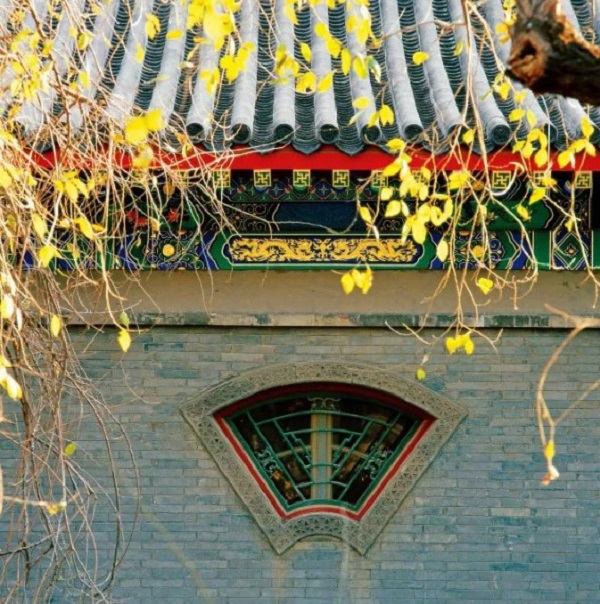
Lin Daiyu, a teenage heroine in the dance drama Dream of the Red Chamber written by Cao Xueqin (1715-1763) in the Qing Dynasty (1644-1911), said in a poem entitled "A Windy, Rainy Evening by the Autumn Window":
Chill mist enwraps the court in loneliness,
Bamboos drip by the lattice without pause;
None can tell when the wind and rain will cease,
But already tears have soaked her window's gauze.

An overview of Prince Kung's Palace Museum
Windows are important components of ancient Chinese buildings. They are designed in various styles and can be mainly classified into sill windows, support windows (Hehe window in Chinese), and openwork windows, and are made with special patterns and decorations to reveal cultural symbols and embody the aesthetics, social status and wealth of their owners.
Prince Kung's Palace Museum is a classical representative of the art of ancient Chinese architecture. Let's take a look at its windows.
1. Sill windows

A photo of sill windows in Prince Kung's Palace Museum
Sill windows, also known as partition windows, are one of the major window forms in ancient Chinese architecture of the Ming and Qing dynasties. They are usually installed on sill walls and can be open inward with rotation shafts. Sill windows are often designed in the same patterns and colors with partition doors to create a harmonious, unified and regulated surface.


Two photos of sill windows in the Yin'an Hall of Prince Kung's Palace Museum
2. Support windows

Support windows in Prince Kung's Palace Museum
Support windows, also known as Hehe windows in Chinese, are usually divided into upper and lower layers (but there are also three-layer support windows). The upper layer can be raised and lowered, while the lower one is rigid and upright.
The window can be taken off by removing the wooden latch. There is an inside layer, the upper half of which is decorated with silk and paper, and the upper area of the lower half is installed with transparent glass to make the rooms bright.


Two photos of support windows in the Rear Building of Prince Kung's Palace Museum
3. Openwork windows

An openwork window in Prince Kung's Palace Museum
Openwork windows have stone carvings, kneadings, or blue bricks, tiles, bamboo and wood in their middle. They are a special type of windows in traditional Chinese architecture and an indispensable component in the art of classical Chinese art. They are usually installed in a closed place with a short range of visibility to create additional layers in a limited space.

Openwork windows in the Rear Buildings of Prince Kung's Palace Museum

Openwork windows in the Courtyard of Heavenly Fragrance of Prince Kung's Palace Museum
4. Assorted windows
Assorted windows, a type of openwork window, are known for their exquisite patterns and various carvings. Their special form has been widely applied in verandas and courtyards. Assorted windows were generally built in the shape of silver ingot and fruits, with round, square, and polygon sector contours.



Three photos of assorted windows in the Rear Building of Prince Kung's Palace Museum
These special windows show the historical changes in Prince Kung's Palace Museum in the past century. It is an ideal place for people to enjoy the poetic and delicate charm of ancient Chinese windows.